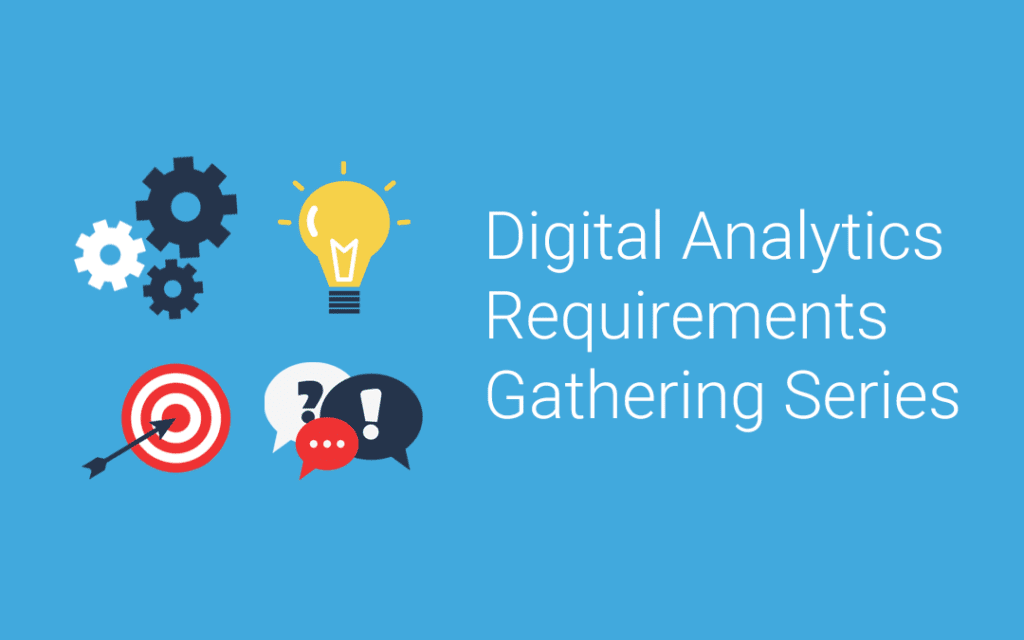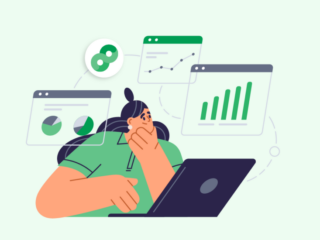Welcome back! In the first installment of this series on developing requirements for digital and marketing analytics data collection – “A Grammarian’s Guide to Digital Analytics Requirements Gathering” – I covered a common approach:
- Determine business initiatives, objectives
- Define KPIs, metrics and key data points
- Determine data collection specifications and customizations

In this post, I’ll be diving into a more controversial approach: Track All The Things!
If the “Initiatives, Objectives, and KPIs” approach is like a carefully aimed and targeted jet of water, “Track All The Things” is a shower set to full blast.
Instead of identifying requirements and aligning tracking to those requirements, you track everything just in case you need it further down the line.
I’ll cover the key questions to ask when considering this method and then review the pros-and-cons.
Key Questions
- What infrastructure is in place or is available to facilitate automated event-based tracking?
Let’s consider the example from my first post in this series.
You are a Marketing Analyst at a major hotel chain and are working on launching a new resort. The VP of Marketing has told you she wants to track “everything” on the website when the site launches. When you ask her to clarify, she says she wants to track all clicks, form submits, page views, video plays, transactions; every action a user takes on the site, she wants it recorded.
The request to track everything is a common one. By making this request, the VP is providing a set of requirements, albeit a broad set. As analysts, it’s our job to take a vague request and translate it into a defined set of requirements. This can and should be done when talking about tracking everything.
Finding an analytics tool which enables event tracking without requiring much additional configuration is highly recommended when using this approach.
You should confirm what is tracked automatically, as you may need to work with the vendor on customization if all of your needs are not met. Tools like Heap Analytics and MixPanel excel at event-based tracking.
But what if finding a new tool isn’t an option?
It’s up to you to identify what universal identifiers are in place on your site to automate event tracking.
- Do all links contain a specific Class or element?
- Do all forms contain a unique ID?
If unique identifiers aren’t already in place, work with developers to tag site elements to enable automated event tracking.
- Where do you plan to store your raw data? What are the considerations for storing it?
When you’re planning to track everything, consider where all of the data will live and how much it will cost. How much historical data does your chosen platform retain before charging you overages or purging it? Depending on the volume of data you’re collecting, you may need to utilize a data warehousing tool to supplement your analytics platform.
If you are considering the “track all the things” approach for your web analytics, you should also think about incorporating other datasets. Those who use Google Analytics 360 and Salesforce can integrate their data in BigQuery and benefit from the $500 monthly credit which GA360 subscribers can use towards BigQuery.
Examples of other datasets which you could incorporate are organic and paid social, paid media, email marketing, mobile apps, and more!
Cost varies from platform to platform, so this should be a consideration you explore early in the process.
- Can actionable insights be drawn from your data?
Ideally, your analytics platform would present your data in an organized, clean manner and drawing insights would be a breeze. However, if you’ve accumulated terabytes of data and require a data warehousing tool, additional steps may be required. You may need to combine an ETL (Extract, Transform, and Load) tool and a data visualization tool in order to get to the point of insight.
E-Nor frequently uses Analytics Canvas for ETL work prior to visualizing in a tool like Tableau (paid) or Google Data Studio (free).
Pro and Cons of the “Track All The Things” Approach
- Pros
- Comprehensive: By tracking everything, you can look back at a wealth of data and make more informed decisions than if you only accounted for specific actions. For example, you could blend your website activity data with CRM data to develop a comprehensive Lifetime Value model. Having a larger pool of data to work can enable deeper analysis and insights.
- Automated: Automation can mean less on-going maintenance with the setup.
- Cons
- Signal vs Noise: It can be difficult to find your insights (signal) in the midst of all the noise from your data.
- Resource Intensive: The more data you collect, the more resources (money, space) you will need to spend to maintain it.
Personally, I prefer more targeted methods for requirements gathering than this method. But as digital analytics becomes more automated, I wouldn’t be surprised if this approach becomes more and more popular.
If you enjoyed this post or have questions, connect with me on Twitter at @caitlinmariemcc or via email at caitlin@e-nor.com.
Check back next week for our 2nd installment in this series, “Customer Journey Mapping”.
Continue Reading the posts in this series:


















